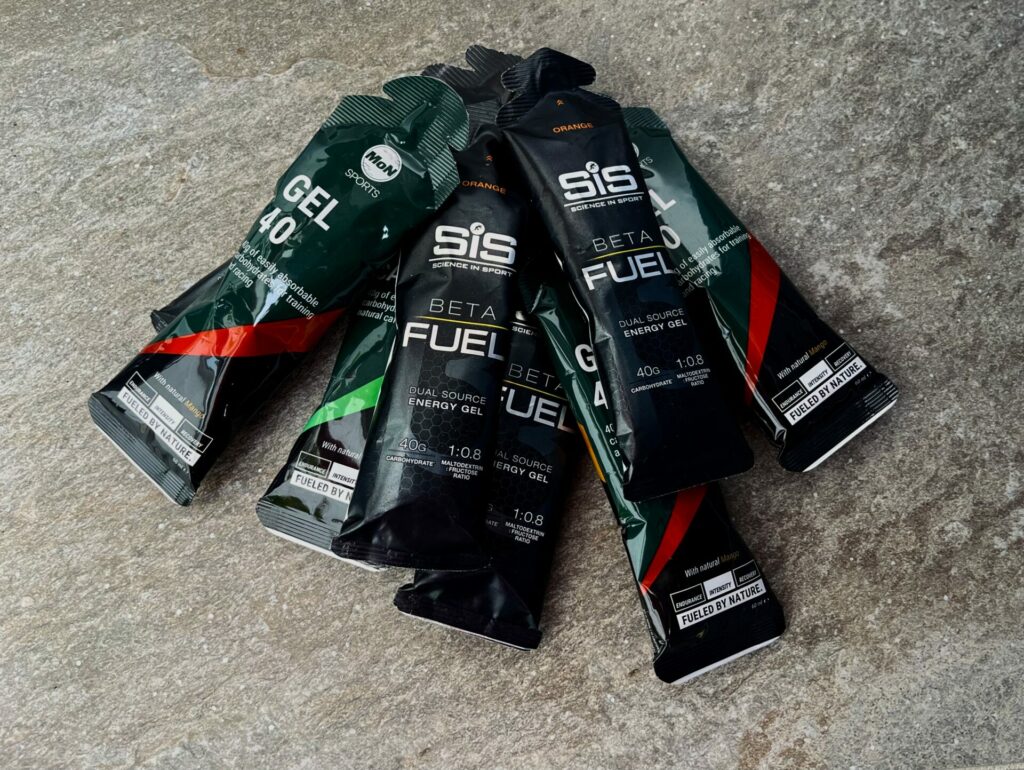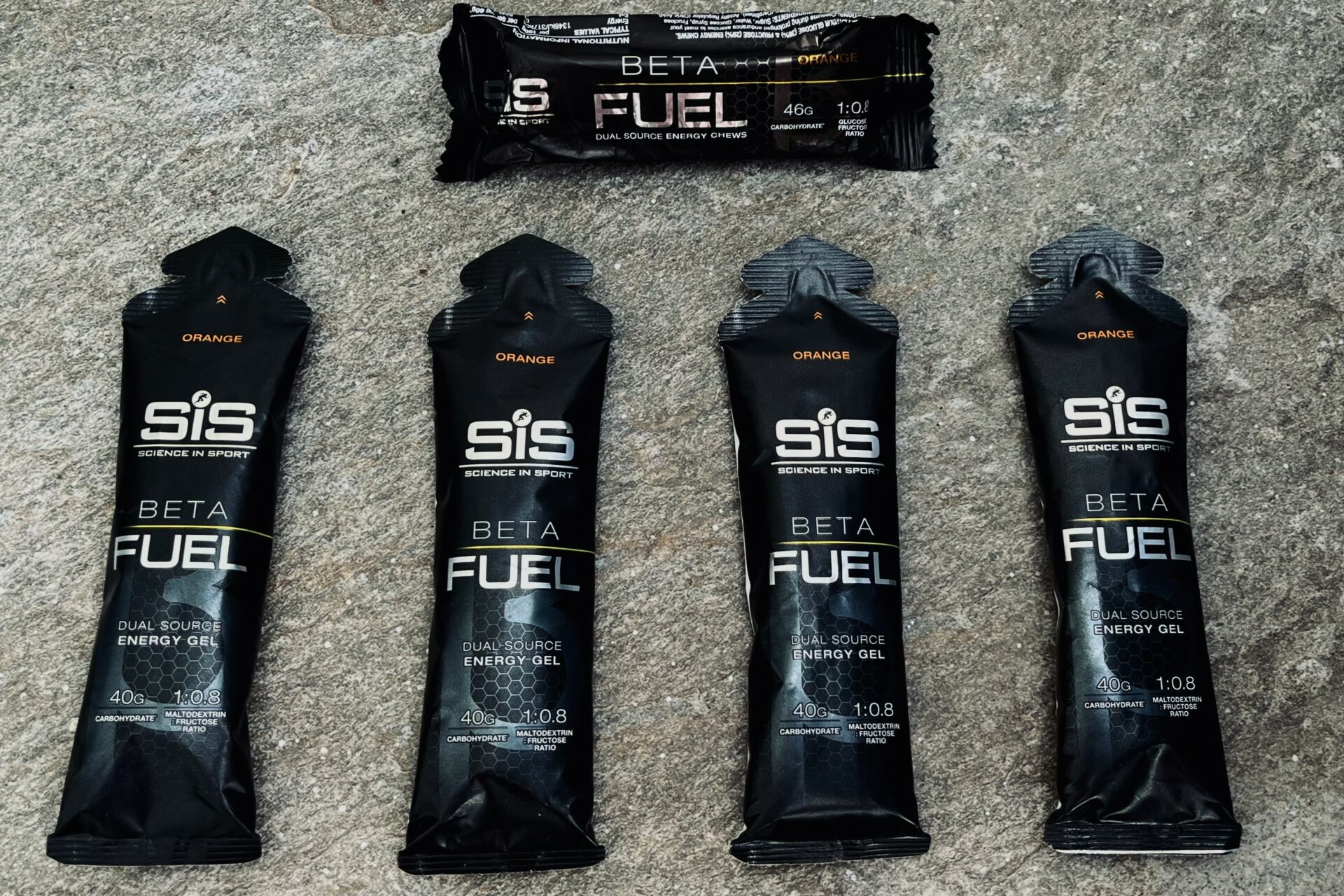60 grams of carbs per hour of cycling has long determined what’s possible to ingest. But this ceiling had to make way for 90g of carbs per hour. If you’re serious about competition, on-bike fuel and the number of carbohydrates you consume per hour are critical for optimal endurance performance.
As soon as some “gap” in carb intake appears it’s like a fear of missing out, you want to consume these high amounts as well. But is it even possible or necessary to eat that many carbs on a bike ride?
Looking at methods pro teams like Jumbo-Visma or Ineos-Grenadiers use, they included the strategy of 90-120 grams of carbs per hour. At least we have some evidence about high-carb intakes.
Here’s what you need to know…
1. Proper bike nutrition in the face of hydration
If you want to ingest high amounts of carbs, make sure that you’re well-hydrated. Because dehydration slows down gastric emptying and gut motility. Hence the sugar remains way too long in your intestine and will cause problems. How much fluid you need to consume per hour on the bike is highly individual. It depends on your sweat rate. How much fluid is lost through sweat?
Once you get that right it’s time to increase the amounts of carbs you can consume per hour of bike riding. While for easy endurance training, 30 grams of carbs per hour might be enough, and 60 grams of carbs work for interval workouts, the requirements for races can be very different.
So, no matter if you want to lose weight as a cyclist or improve your performance, nutrition plays an invaluable role in the process.
2. 90 Grams of Carbs per Hour Riding: The Outdone Limit?
90g of carbs per hour was the gold standard when it came to proper cycling nutrition for races.
And it’s no accident that when looking at how pro teams that compete in the Giro d’Italia or the Tour de France manage their nutrition, they always strive for new limits. A recent debate is the consumption of more than 90g of carbs per hour during racing. To be precise we are talking about 120 grams of carbs per hour!
If you’re quick in math, you notice that’s a 30g per hour gap. Add this to your ultra-endurance event and you find yourself with a deficit of 150-300 grams of carbs during 6-8 hours. Or 600 to 1200kcal less. At least if you’ve got the 90g carbs thing right already. That means consuming more than 400kcal per hour on the bike.
Now, you may think “Great Roberto. But that’s just for the pros and their special carb drinks and gels.” I have to tell you it’s not. And evidence got my back.
3. The New Gold Standard of Carb Intake in Cycling?
In a study done by Viribay et al., they tested the 120g of carbohydrates per hour strategy and the findings are very promising.
What they were looking for in the study was if higher ingestion of carbs could reduce exercise-induced muscle damage in marathon runners.
So, they separated mountain marathoners into three groups: a low group with 60g carbs per hour, a control group with 90g per hour, and an experimental with 120g per hour. Interestingly, they used the 2:1 ratio of maltodextrin to fructose. This is considered to be one of the most efficient ratios for carbohydrate absorption. All participants got the same 30 grams of gel with the desired ratio. Thus 2 gels for low, 3 for control, and 4 gels for experimental per hour of running.
What were the findings? As muscle damage was measured with ratings of perceived exertion and markers like creatine kinase etc. for the 120g per hour group those markers were lower as well as perceived exertion compared to the 60g per hour and 90g per hour group.
According to this study, it’s possible to consume up to 120g per hour.
But how do you manage to consume such a high intake of carbs on your bike?

4. Gut Training: The Secret to high carb consumption
The biggest factor for this study was proper gut training before the experiment. This took about 3 weeks. Why train the gut? Because our intestine isn’t used to absorbing these high amounts of sugar. However, if we make nutrition an important part of our training rides we can improve our intake rate.
Responsible for the absorption of carbs are different transport proteins in the gut like GLUT-2 (high glucose), SGLT-1 (for glucose), and GLUT-5 (for fructose). Regular carbohydrate intake in training and racing helps to form more of these transport pathways. The result is a higher carbohydrate absorption.
Following this, keep in mind to consume carbohydrates during training and racing regularly in the form of carb drinks, gels, and bars. And use the preferred 2:1 maltodextrin to fructose ratio.
Find what works for you: Start with 60g of carbs per hour and see how you cope with it. Fueling is pretty individual. The sweet spot for most cyclists seems to be at 90 grams of carbs per hour. Test it out in a C-race for example. Race conditions always differ and you want to make sure you’re ready to eat right when the a-race comes up. The response to these high doses of carbs was also a bit individual in the study. However, the 7 marathon finisher didn’t notice gut problems.
What about the new ratio of 0.8:1 fructose to maltodextrin? More high-quality research is needed. But give it a try. I use the new ratio and it works great for me with high intakes. But, I do practice my on-bike nutrition consistently.
One last thing to keep in mind is that with consuming more than 90g of carbs per hour the risk for gut issues increases. This is because the more carbs are utilized, the more carbs remain in the gut. Not all is absorbed. By 120g per hour, only 90g of carbs is oxidized. Practice and response are crucial.
5. Takeaways
As you can see higher intakes are possible but it’s still individual how much you can consume. Find your sweet spot no matter if it’s 60 grams or 90 grams per hour of cycling. Let’s summarize the key takeaways:
- Intakes of 90-120 g/h are possible
- Use a 2:1 maltodextrin to fructose ratio with drinks, gels, and bars
- Practice nutrition on bike rides and in lower-priority races
- Getting used to these high amounts will take longer and be more difficult
- Higher intakes increase risks for gut problems, practice a lot
- Find your sweet spot of the amount you can consume. Don’t be frustrated if 60 grams is your limit but be happy you found the way you can train and race best with
We see that bike racing is getting faster and faster. And proper bike nutrition plays a major role. It’s quite important to ingest the number of carbs per hour of riding that is right for you. So, you better start to practice right away.
Ready to Improve Your Cycling Performance?
If you enjoyed this and want to improve your cycling performance, then get your hands on one of my plans on TrainingPeaks and ride faster for longer, or click below to get my specific base, build, and peak plans for amateur and elite cyclists:
- RV The Block Periodization Plan, 4 Weeks (6-8 Hours)
- RV Improve Your FTP, 8 Weeks on 6 Hours, 10 Hours, or 15 Hours
- RV Road Racing Build, 8 Weeks on 6 Hours, 10 Hours, or 15 Hours
Follow me on Instagram for more Cycling Content.
Footnotes
https://www.mysportscience.com/post/the-case-for-high-carbohydrate-intake-during-long-races
https://www.mysportscience.com/post/120-grams-of-carbohydrate-per-hour-in-mountain-marathon-runners
Effects of 120 g/h of Carbohydrates Intake during a Mountain Marathon on Exercise-Induced Muscle Damage in Elite Runners: https://www.mdpi.com/2072-6643/12/5/1367/htm
